Boat Engine Ignition Systems: Troubleshooting and Maintenance Guide


Your boat engine's ignition system is the spark that brings your marine power plant to life. When it's working properly, you might never give it a second thought. But when ignition problems arise, they can quickly turn a perfect day on the water into a frustrating experience. Understanding how your boat's ignition system works, how to maintain it properly, and how to troubleshoot common problems can save you time, money, and headaches. This comprehensive guide will walk you through everything you need to know about marine ignition systems, from basic components to advanced troubleshooting techniques.
Understanding Marine Ignition Systems
Before diving into maintenance and troubleshooting, it's important to understand the basic components and operation of marine ignition systems:
Types of Marine Ignition Systems
Boat engines use several different types of ignition systems, depending on their age, manufacturer, and design:
Magneto Ignition Systems


- Common in older outboard engines
- Generates electricity using magnets on the flywheel
- Self-contained system that doesn't require a battery
- Simple and reliable but limited in timing adjustment
- Often uses points and condensers for timing
Battery-Powered Ignition Systems
- Relies on battery power for spark generation
- Uses a coil to step up voltage
- More common in inboard engines
- Allows for more precise timing control
- Requires a functioning battery and charging system
Capacitor Discharge Ignition (CDI) Systems

- Most common in modern outboard engines
- Uses capacitors to store and release energy
- Provides hotter, more reliable spark
- Often controlled by electronic modules
- Can be magneto-powered or battery-powered
Electronic Ignition Systems
- Found in newer marine engines
- Uses sensors and computer control
- Provides precise timing adjustments
- Often integrated with engine management systems
- Eliminates mechanical wear components
Key Components of Marine Ignition Systems

Regardless of the type, most marine ignition systems include these essential components:
Power Source
- Battery: Provides initial power in battery-powered systems
- Magneto: Generates power from engine rotation in magneto systems
- Alternator/Stator: Produces electricity while the engine runs
Control Components
- Points and Condenser: In older systems, controls spark timing
- CDI Module: Electronic control unit for capacitor discharge systems
- Electronic Control Module (ECM): Computer that controls timing in modern engines
- Trigger/Pulse Generator: Signals when to fire the spark
Voltage Generation and Delivery
- Ignition Coil: Transforms low voltage to high voltage (20,000+ volts)
- Spark Plug Wires: Delivers high voltage to spark plugs
- Distributor: In some inboard engines, directs spark to correct cylinder
- Spark Plugs: Creates spark that ignites fuel/air mixture
Safety and Control Switches
- Kill Switch: Emergency engine shutoff
- Neutral Safety Switch: Prevents starting in gear
- Ignition Switch: Main power control for the ignition system
How Marine Ignition Systems Work
The basic operation of a marine ignition system follows these steps:
- Power Generation: Electricity is provided by the battery or generated by the magneto/stator
- Timing Signal: The trigger/pulse generator signals when spark is needed based on engine position
- Control Processing: The CDI module or ECM processes this signal
- Voltage Amplification: The ignition coil transforms low voltage to high voltage
- Spark Delivery: High voltage travels through spark plug wires to spark plugs
- Combustion: Spark ignites the fuel/air mixture in the cylinder
This process happens hundreds of times per minute while your engine is running, with precise timing that varies based on engine speed, load, and other factors.
For quality ignition system components, check our marine ignition components.

Common Ignition System Problems
Marine ignition systems can experience various issues that affect engine performance or prevent starting:
No-Start Conditions
Complete Ignition Failure
- Symptoms: Engine won't start, no spark at plugs
-
Common Causes:
- Failed CDI module or ignition coil
- Broken kill switch circuit
- Faulty ignition switch
- Damaged trigger/pulse generator
- Corroded connections
- Failed stator (in magneto systems)
Intermittent Starting Problems
- Symptoms: Engine starts sometimes but not others
-
Common Causes:
- Loose or corroded connections
- Temperature-sensitive component failure
- Worn ignition switch
- Failing CDI module
- Moisture in ignition components
Running Problems
Misfiring
- Symptoms: Engine runs rough, hesitates, or loses power
-
Common Causes:
- Fouled or worn spark plugs
- Damaged spark plug wires
- Cracked distributor cap (on inboard engines)
- Incorrect timing
- Water-contaminated fuel
- Weak spark from failing coil
High-Speed Cutting Out
- Symptoms: Engine runs fine at low speed but cuts out at high RPM
-
Common Causes:
- Overheating CDI module
- Weak coil that fails under load
- Incorrect spark plug heat range
- Timing issues that appear under load
- Fuel delivery problems
Hard Starting When Hot
- Symptoms: Engine starts easily when cold but is difficult to restart when hot
-
Common Causes:
- Heat-sensitive ignition components
- Vapor lock in fuel system
- Incorrect spark plug heat range
- Failing CDI module
- Weak ignition coil that deteriorates when hot
Specific Component Problems
Spark Plug Issues
- Carbon Fouling: Black, sooty deposits from rich fuel mixture or oil
- Wet Fouling: Wet plugs from flooding or water intrusion
- Electrode Wear: Eroded electrodes from normal use
- Overheating: White, blistered insulators from too hot operation
- Physical Damage: Cracked insulators or bent electrodes
Ignition Coil Failure
- Internal Shorts: Coil windings break down internally
- Heat Damage: Excessive heat causes insulation failure
- Moisture Intrusion: Water enters and corrodes internal components
- Connection Problems: Corroded terminals reduce performance
CDI Module Issues
- Electronic Component Failure: Internal transistors or capacitors fail
- Heat Sensitivity: Module works when cool but fails when hot
- Moisture Damage: Water intrusion causes corrosion and shorts
- Vibration Damage: Internal connections break from vibration
For replacement ignition components, check our Yamaha ignition parts and Mercury ignition components.
Ignition System Troubleshooting
When facing ignition problems, a systematic approach helps identify the cause:
Essential Troubleshooting Tools
- Spark Tester: Verifies spark at plug wires
- Multimeter: Measures voltage, resistance, and continuity
- Timing Light: Checks ignition timing
- Compression Tester: Verifies cylinder compression
- Spark Plug Socket: Properly removes and installs plugs
- Dielectric Grease: Protects electrical connections
- Service Manual: Provides specifications and procedures
Basic Troubleshooting Steps
Step 1: Verify the Problem
- Determine if the problem is consistent or intermittent
- Note when the problem occurs (cold start, hot restart, high speed, etc.)
- Check if the problem affects all cylinders or just one
- Verify that the problem is ignition-related, not fuel or mechanical
Step 2: Check for Spark
- Remove a spark plug and connect it to the plug wire
- Ground the plug to the engine block
- Crank the engine and look for a strong blue spark
- Alternatively, use a spark tester tool
- Test multiple cylinders to compare
Step 3: Inspect Spark Plugs
- Remove and examine all spark plugs
- Look for fouling, damage, or unusual deposits
- Check electrode gap with a feeler gauge
- Compare condition across all cylinders
- "Read" the plugs to diagnose engine conditions
Step 4: Check Kill Switch and Safety Circuits
- Verify kill switch is functioning properly
- Check neutral safety switch if engine won't crank
- Inspect wiring for damage or corrosion
- Test continuity of safety circuit wires
Step 5: Test Ignition Components
- Measure resistance of ignition coil primary and secondary windings
- Check stator/magneto output (if applicable)
- Test trigger/pulse generator resistance
- Inspect spark plug wires for resistance and damage
- Compare readings to specifications in service manual
Advanced Troubleshooting Techniques
Testing CDI Modules
CDI modules can be difficult to test without specialized equipment, but these approaches can help:
- Swap with a known good module if available
- Test input and output voltages with a multimeter
- Check for visible damage or corrosion
- Test when cold and after warming up
- Use manufacturer-specific diagnostic procedures if available
Stator/Magneto Testing
- Measure AC voltage output while cranking
- Check resistance between stator leads
- Test for shorts to ground
- Inspect for physical damage or burnt windings
- Compare readings to service manual specifications
Trigger/Pulse Generator Testing
- Measure resistance between trigger wires
- Check for shorts to ground
- Inspect for physical damage
- Test AC voltage output while cranking
- Verify air gap between trigger and flywheel (if adjustable)
Timing Verification
- Connect timing light to spark plug wire
- Aim at timing marks on flywheel
- Compare observed timing to specifications
- Check for timing advance as RPM increases
- Adjust timing if possible and specified
Ignition System Maintenance
Regular maintenance prevents many ignition problems before they start:
Routine Maintenance Tasks
Spark Plug Maintenance
- Inspection: Check plugs for wear and deposits every 50-100 hours
- Cleaning: Clean lightly fouled plugs with a wire brush
- Gap Adjustment: Verify and adjust gap to specifications
- Replacement: Replace plugs according to manufacturer schedule (typically 100-300 hours)
- Anti-Seize: Apply small amount to threads when installing
- Torque: Tighten to specified torque to prevent damage
Ignition Wire Maintenance
- Inspection: Check for cracks, burns, or chafing
- Resistance Testing: Verify resistance is within specifications
- Connection Cleaning: Clean terminals and boots
- Dielectric Grease: Apply to boots to prevent moisture intrusion
- Routing: Ensure proper routing away from hot or moving parts
Electrical Connection Maintenance
- Cleaning: Remove corrosion with electrical contact cleaner
- Tightening: Ensure all connections are secure
- Protection: Apply dielectric grease or corrosion inhibitor
- Inspection: Check for heat damage or melted insulation
- Sealing: Ensure waterproof connectors are properly sealed
Seasonal Maintenance
Spring Commissioning
- Inspect all ignition components after winter storage
- Check for rodent damage to wiring
- Test spark before first start of season
- Verify timing if applicable
- Replace any components showing signs of deterioration
Fall Winterization
- Spray ignition components with moisture displacing lubricant
- Cover exposed electrical connections
- Disconnect and clean battery terminals
- Consider removing CDI modules in harsh winter environments
- Document any issues to address before spring
Preventative Maintenance Tips
Moisture Protection
- Use marine-grade spark plug boots
- Apply dielectric grease to all connections
- Ensure drain holes in ignition covers are clear
- Consider silicone conformal coating for exposed electronics
- Use heat shrink tubing with adhesive lining for connections
Heat Management
- Ensure proper engine cooling system function
- Maintain adequate airflow around CDI modules
- Use correct heat range spark plugs
- Keep ignition components away from exhaust heat when possible
- Consider heat shields for components near hot areas
Vibration Protection
- Secure all ignition components properly
- Use vibration-resistant mounting methods
- Check mounts regularly for deterioration
- Ensure wiring harnesses are properly supported
- Replace worn rubber mounts or grommets
Ignition System Upgrades
Consider these upgrades to enhance your vessel's ignition system reliability and performance:
Upgrading Older Systems
Points to Electronic Conversion
- Eliminates mechanical wear components
- Provides more consistent timing
- Reduces maintenance requirements
- Improves starting reliability
- Available as kits for many older engines
Improved Ignition Coils
- Higher energy output for better combustion
- Better heat resistance for reliability
- Improved insulation for longer life
- Multiple spark capability in some designs
- Often direct replacements for original coils
Modern CDI Modules
- More reliable electronic components
- Better environmental protection
- Improved heat dissipation
- More precise timing control
- Available for many popular engine models
Performance Upgrades
High-Performance Spark Plugs
- Precious metal electrodes for longer life
- Fine-wire designs for better ignition
- Multiple electrode configurations
- Better heat dissipation properties
- Improved cold starting capability
Performance Ignition Wires
- Lower resistance for better spark delivery
- Improved insulation for less energy loss
- Better heat and chemical resistance
- Reduced electromagnetic interference
- Stronger construction for durability
Programmable Ignition Systems
- Customizable timing curves
- Adjustable for modified engines
- Data logging capabilities
- Integration with other engine management functions
- Available for some popular marine engines
Reliability Upgrades
Waterproofing Improvements
- Sealed connectors and boots
- Conformal coating for electronics
- Water-resistant CDI enclosures
- Improved sealing for ignition covers
- Marine-grade wiring harnesses
Redundant Systems
- Dual ignition coils
- Backup CDI modules
- Emergency override systems
- Quick-connect backup components
- Critical for offshore or remote boating
Mounting and Vibration Improvements
- Improved mounting locations
- Better vibration isolation
- Heat shields and reflectors
- Reinforced wiring support
- Strain relief for connections
Brand-Specific Ignition Systems
Different marine engine manufacturers use various ignition system designs:
Yamaha Outboard Ignition Systems
- CDI Systems: Most models use capacitor discharge ignition
- TCI Systems: Some models use transistor-controlled ignition
- Multi-Coil Design: Individual coils for each cylinder in many models
- Common Issues: Pulse generator failures, CDI module heat sensitivity
- Maintenance Tips: Keep CDI modules dry, check stator output regularly
For Yamaha ignition components, check our Yamaha ignition parts collection.
Mercury Outboard Ignition Systems
- Thunderbolt Ignition: Older systems with external ignition components
- CDM Ignition: Capacitive Discharge Modules in newer models
- ECU-Controlled: Latest models with full electronic control
- Common Issues: Switch box failures, stator problems, trigger issues
- Maintenance Tips: Protect CDM from water, check kill switch connections
For Mercury ignition components, check our Mercury ignition parts collection.
Johnson/Evinrude Outboard Ignition Systems
- Magneto Systems: Older models with points and condensers
- CD Systems: Capacitor discharge in mid-range models
- FICHT/E-TEC: Advanced electronic systems in newer models
- Common Issues: Power pack failures, timer base problems
- Maintenance Tips: Check timer base gap, protect power packs from heat
For Johnson/Evinrude ignition components, check our Johnson/Evinrude ignition parts collection.
Inboard Engine Ignition Systems
- Distributor Systems: Traditional design with rotor and cap
- Electronic Ignition: Eliminates points in older designs
- Coil-Near-Plug: Individual coils mounted near each cylinder
- Common Issues: Distributor cap corrosion, rotor wear, timing slippage
- Maintenance Tips: Keep distributor dry, check for corrosion regularly
DIY Ignition System Repairs
Many ignition system repairs can be performed by boat owners with basic mechanical skills:
Spark Plug Replacement
Tools Needed
- Spark plug socket (correct size for your plugs)
- Socket wrench or extension
- Feeler gauge for gap adjustment
- Anti-seize compound
- Torque wrench (recommended)
Procedure
- Remove spark plug wire by gripping the boot and twisting while pulling
- Clean area around plug to prevent debris entering cylinder
- Remove plug with socket wrench
- Inspect old plug for wear patterns and deposits
- Check gap on new plug and adjust if necessary
- Apply small amount of anti-seize to threads (avoid getting on electrodes)
- Thread in by hand first to prevent cross-threading
- Tighten to specified torque (typically 15-20 ft-lbs)
- Reconnect spark plug wire securely
Ignition Coil Replacement
Tools Needed
- Basic hand tools (screwdrivers, socket set)
- Dielectric grease
- Service manual for reference
- Multimeter (for testing)
Procedure
- Disconnect battery negative terminal
- Remove spark plug wires from coil
- Label and disconnect electrical connections
- Remove mounting bolts and coil
- Compare new coil to old for correct replacement
- Install new coil and secure mounting bolts
- Apply dielectric grease to electrical connections
- Reconnect wiring and spark plug wires
- Reconnect battery and test
CDI Module Replacement
Tools Needed
- Basic hand tools
- Dielectric grease
- Service manual for reference
- Heat sink compound (if specified)
Procedure
- Disconnect battery negative terminal
- Locate CDI module (typically under cowling or on electrical panel)
- Take photos of wiring connections for reference
- Label and disconnect all wiring
- Remove mounting screws and module
- Apply heat sink compound if required
- Mount new module and secure
- Apply dielectric grease to electrical connections
- Reconnect wiring according to labels/photos
- Reconnect battery and test
Stator/Trigger Replacement
Tools Needed
- Flywheel puller (specific to engine model)
- Basic hand tools
- Service manual (essential)
- Torque wrench
- Thread locker
Procedure
- Disconnect battery negative terminal
- Remove engine cover/cowling
- Remove flywheel nut (may require impact wrench)
- Install flywheel puller and remove flywheel
- Take photos of stator/trigger position
- Remove mounting screws and stator/trigger assembly
- Disconnect electrical connections
- Install new components in same position
- Apply thread locker to mounting screws
- Set air gap if adjustable (per service manual)
- Reinstall flywheel and torque nut to specifications
- Reconnect electrical connections
- Reinstall cover and test
When to Seek Professional Help
While many ignition repairs are DIY-friendly, some situations warrant professional assistance:
Complex Diagnostic Situations
- Intermittent problems that are difficult to reproduce
- Multiple systems affected (ignition, fuel, mechanical)
- When diagnostic equipment you don't have is required
- Computer-controlled systems with proprietary interfaces
- When multiple components have been replaced without resolving the issue
Specialized Repairs
- Internal engine timing adjustments
- Flywheel key replacement (affects timing)
- ECU programming or reflashing
- Wiring harness repairs in difficult-to-access areas
- Repairs requiring specialized tools you don't possess
Safety Concerns
- When repairs involve fuel system components
- If you're uncomfortable working with high voltage
- When working in confined spaces with poor ventilation
- If the repair affects critical safety systems
- When manufacturer warranty might be affected
Finding a Qualified Marine Technician
- Look for factory-certified technicians for your engine brand
- Check reviews and ask for recommendations
- Verify experience with your specific engine model
- Ask about diagnostic capabilities and equipment
- Discuss the problem thoroughly before authorizing work
Conclusion
Your boat's ignition system is a critical component that requires proper maintenance and occasional troubleshooting. By understanding how these systems work, recognizing common problems, and performing regular maintenance, you can prevent many issues before they leave you stranded on the water.
When problems do arise, a systematic approach to troubleshooting will help you identify the cause quickly. Many repairs are within the capabilities of boat owners with basic mechanical skills, but don't hesitate to seek professional help for complex issues or when safety is a concern.
For all your marine ignition system needs, including spark plugs, ignition coils, CDI modules, and wiring components, explore JLM Marine's comprehensive marine ignition components collection. Our quality marine-grade products are designed to provide reliable performance for your boating adventures.

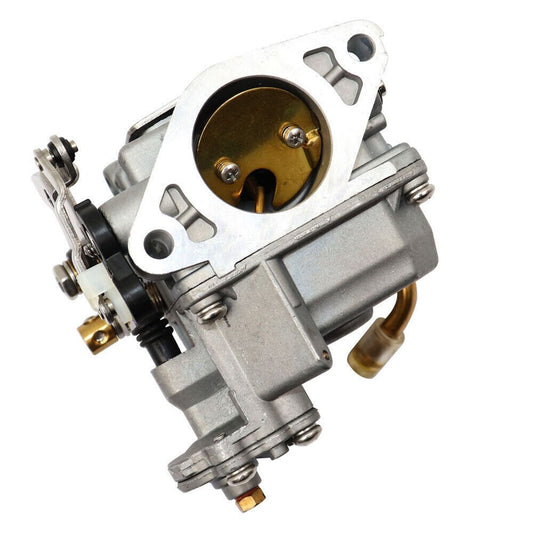
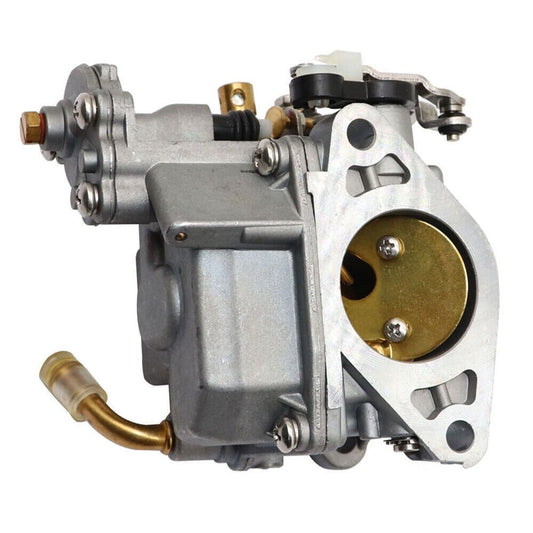
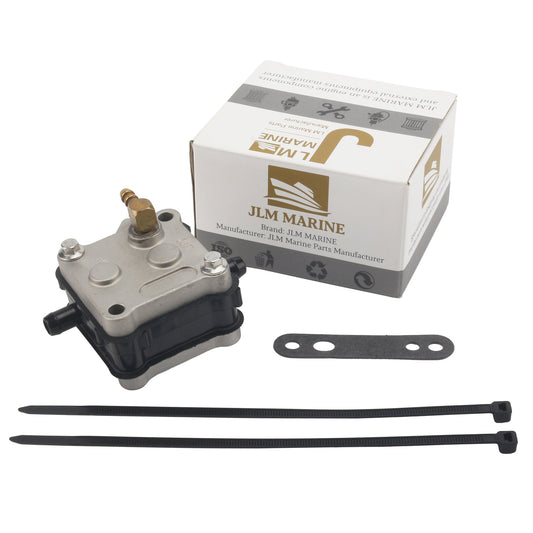
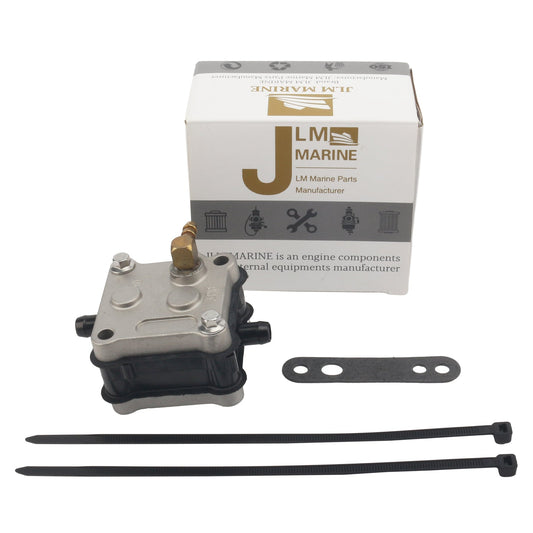
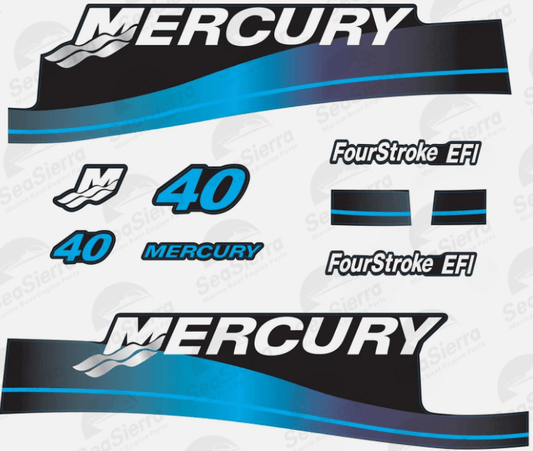
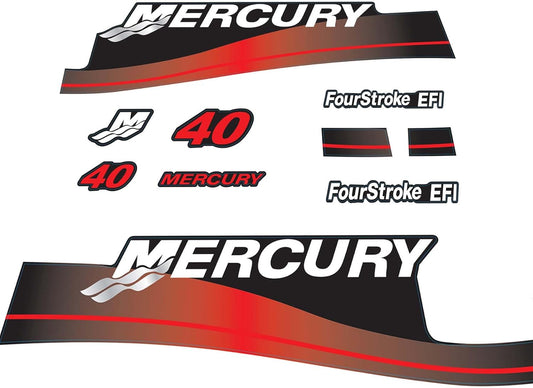
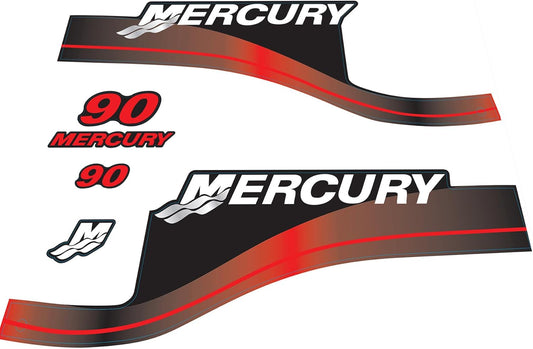
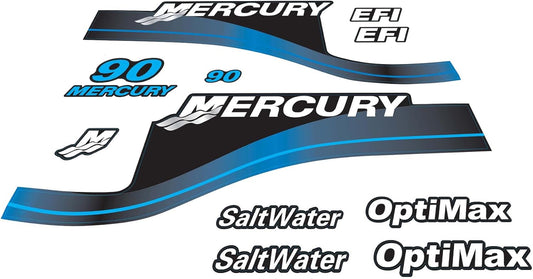
Leave a comment
Please note, comments need to be approved before they are published.